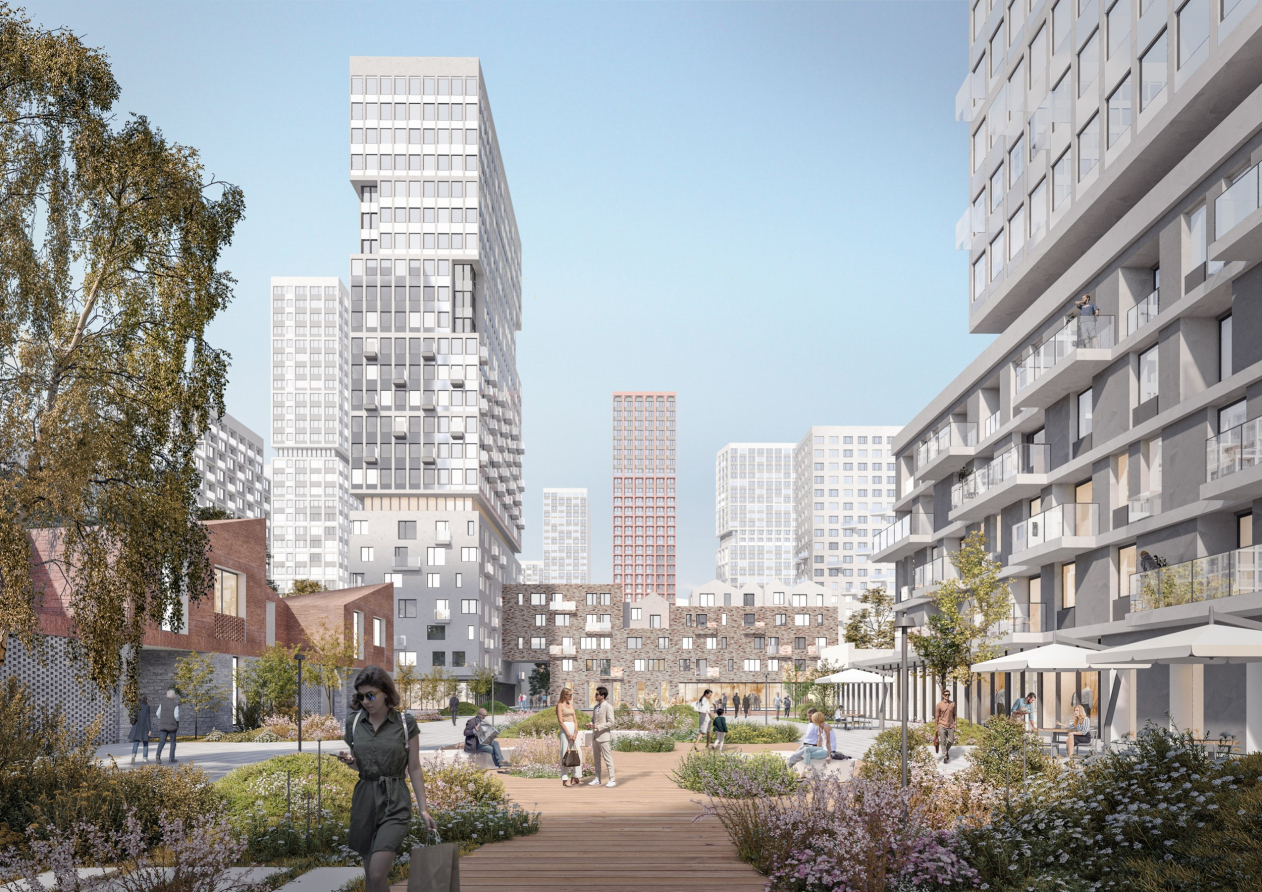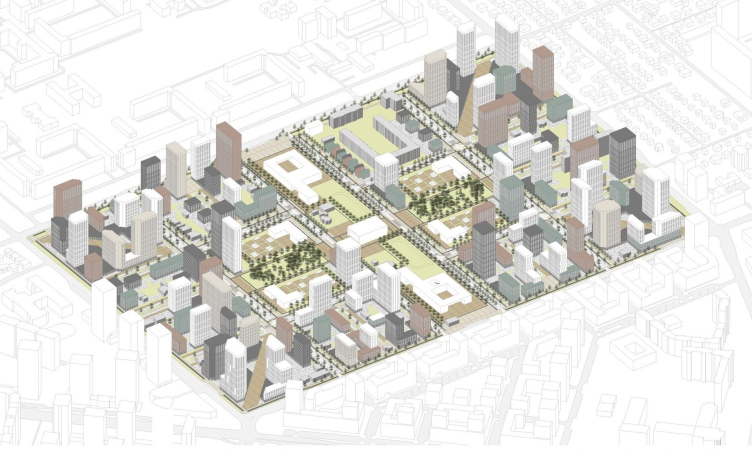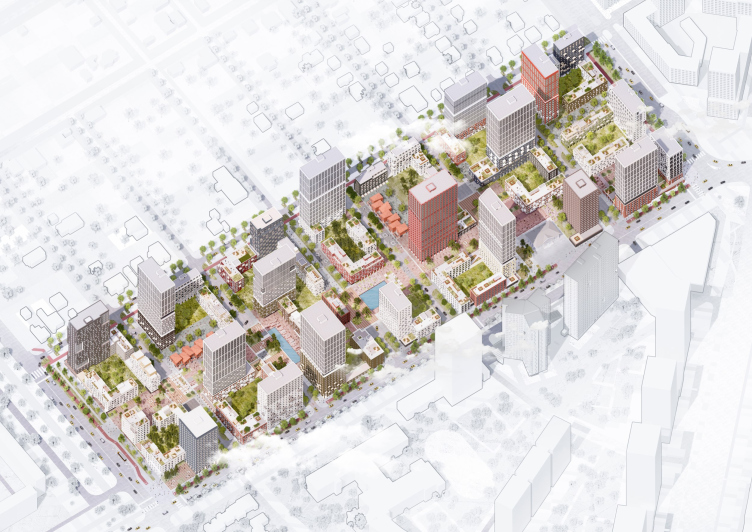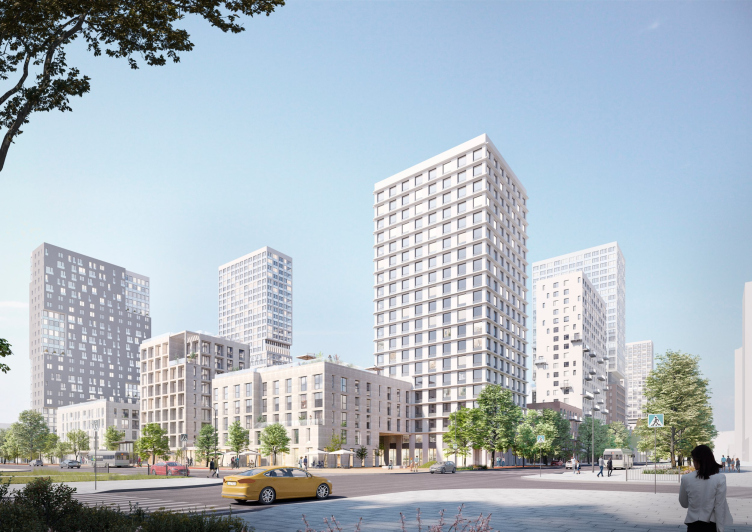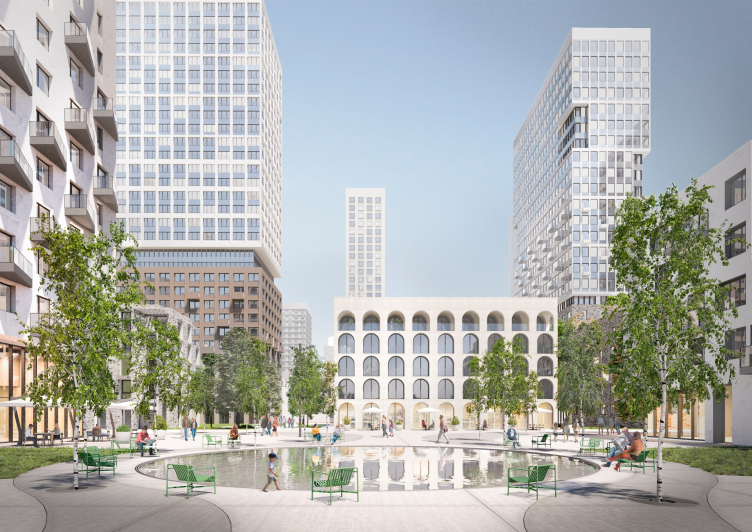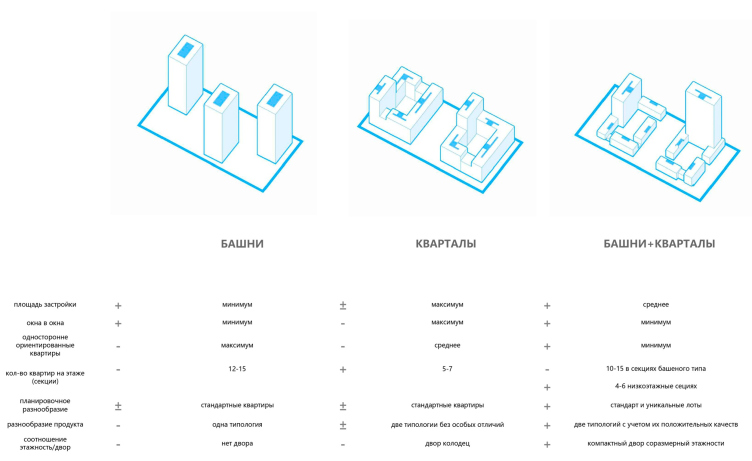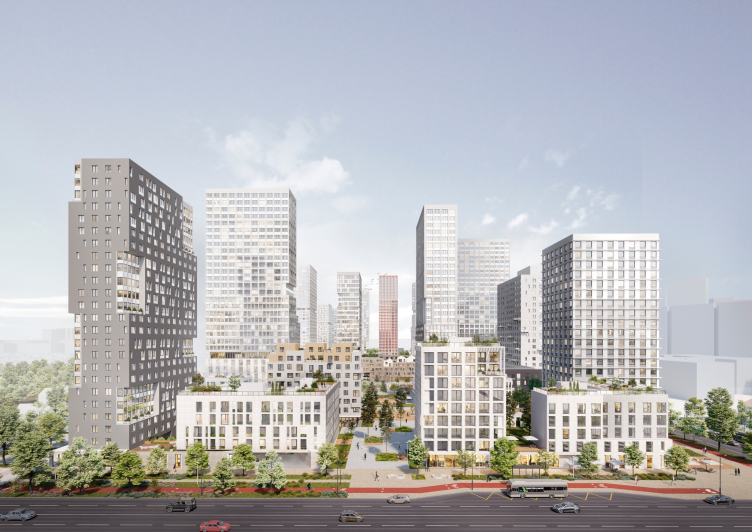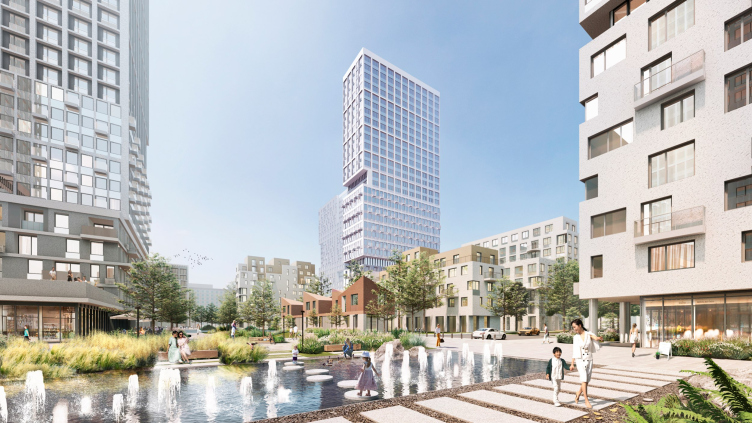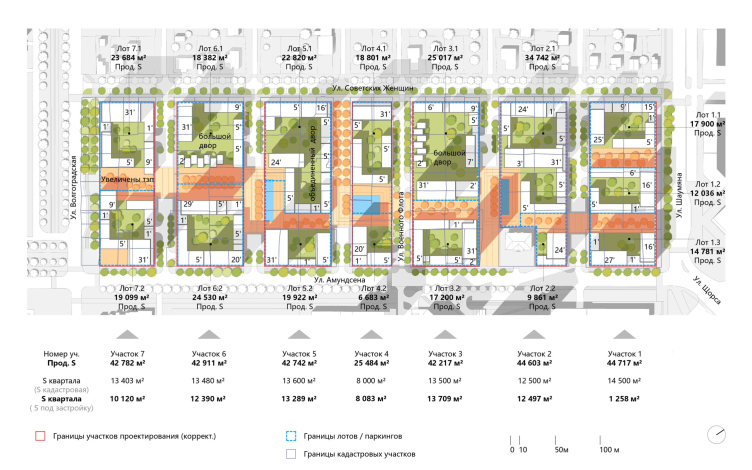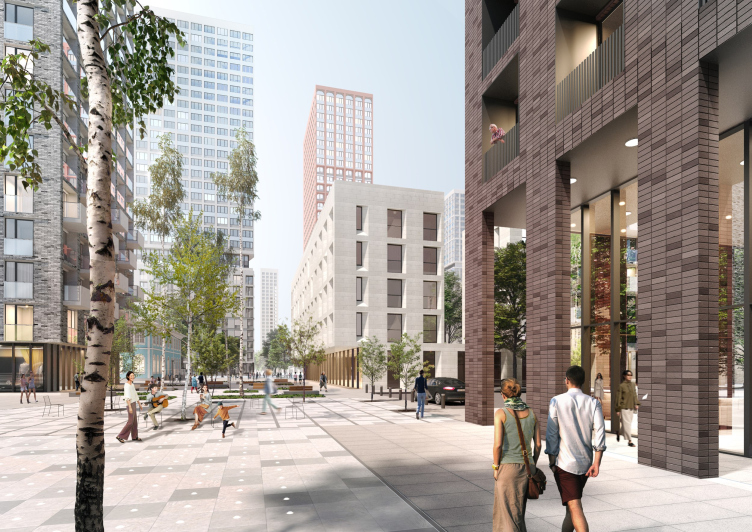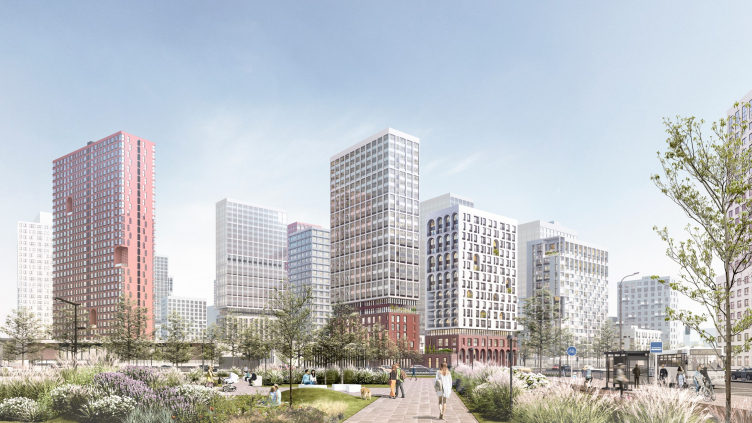The “givens” of this project are far from ordinary: new neighborhoods are planned to be built on the site of cottage development, which at the current stage of Yekaterinburg’s development creates the impression of a spontaneous formation that does not quite match the very term of “urban environment”. Renovation of this territory is included in the master plan.
In 2018, developers already started to look at the cottage settlement; some of them are already implementing their projects: the scheme with the distribution of plots can be found here. At the same time, the site plan has not yet been developed, as the process of buying out homeownership is still ongoing. However, as soon as this or that plot is bought out, construction begins: for example, at the intersection of Shahumyan and Amundsen streets, the Sweet Home complex is currently being built. In the OSA project, the development of a site plan for the first city blocks was also not envisaged, as the development was supposed to be based on the principles of integrated development.
Yandex maps kept a 2021 view of the area; now many of the houses have been demolished.
The 8.9 hectare competition site is delineated by the Soviet Women, Shaumyan, Amundsen and Volgogradskaya Streets, and includes seven rectangular blocks of approximately equal size. Previously, OSA considered the territory within even larger boundaries – stretching as far as the Chkalova Street. The result was a master plan, which included a public core and a system of promenades. The fate of the implementation of the remaining territory is currently unclear.
Microdistrict M73, from Amundsen Street to Chkalova Street
Copyright: © OSA architects
The first thing the OCA does is it utilizes the framework of the existing streets. This is an efficient solution for two reasons: first of all, the transformation will be less painful for the citizens and the memory of the place will be preserved, and in addition, this scale and regularity of the streets will help to make the high-density environment more transparent, and thus accessible and lively.
Residential quarter on Amundsen Street
Copyright: © OSA architects
Residential quarter on Amundsen Street
Copyright: © OSA architects
Proceeding from the street framework, the architects create residential groups with sections of 5-9 floors as a base. There are 16 such groups in total, their concentration and density increasing towards the traffic junction. Sometimes the height is reduced to the level of the stylobate gallery, opening up views of the courtyards, towers, or the boulevard. At the same time, the architects separate everything that exceeds the index of mid-rise buildings plastique-wide and take these buildings into relative weightlessness and background transparency.
Residential quarter on Amundsen Street
Copyright: © OSA architects
Residential quarter on Amundsen Street. Apartments
Copyright: © OSA architects
Then, commensurate with the insolation norms, OSA arranges the towers with a height ranging from 16 to 30 floors in such a way as to form a silhouette composition from the dominants along the perimeter of the blocks and along the pedestrian boulevard. A prominent corner appears on the side of the intersection of Amundsen and Shaumyan Streets, where the architects must respond to a large traffic interchange. The other towers stand more loosely, either in meridional or latitudinal orientation. The almost-completed Sobytie complex next door, also designed by OSA, appears to fit into the general system of high-rise accents.
Residential quarter on Amundsen Street
Copyright: © OSA architects
One of the beliefs of the team working on the project is that the “urban estate” format should be preserved and developed. Therefore, the third level of the scale is “homeownership”. These areas include block townhouses and penthouses with terraces in the upper tiers of five-story houses. The authors also include two-story apartments, typologically similar to separate private residences, included, at one or another level, into the housing complex.
Residential quarter on Amundsen Street
Copyright: © OSA architects
Longitudinally, the microdistrict is dissected by a pedestrian boulevard wrapping around the blocks. According to the project, public life is concentrated here: retail in the first floors, spacious squares with fountains and behind-the-scenes recreation corners, promenades and public gardens. To a pedestrian walking along the boulevard, the neighborhoods are revealed from new angles, bringing more impressions and variety to the daily routine. Private courtyards of residential groups are oriented to the boulevard, which have the obligatory playgrounds and sports fields, as well as two built-in kindergartens. Five streets crossing the neighborhood turn into dead-end passages leading to an underground parking lot. Cabs and delivery vehicles can also make a stop here. A section of Telman Street, located in the center of the neighborhood, also becomes a pedestrian axis.
Residential quarter on Amundsen Street. Master plan
Copyright: © OSA architects
Residential quarter on Amundsen Street
Copyright: © OSA architects
By creating a high-density environment, the architects simultaneously achieved its human scale and a variety of possible spatial impressions. From distant angles, the viewer can only see silhouettes of towers resembling tree trunks. But when one enters this “forest”, the whole ecosystem is revealed, consisting of multi-height houses and cottages, “slabs” and towers, which hide behind each other and then reappear, revealing previously unnoticed details.
Residential quarter on Amundsen Street
Copyright: © OSA architects
Residential quarter on Amundsen Street
Copyright: © OSA architects

